#basalt delta
Photo

warmup sketch from today
6K notes
·
View notes
Text
Contrary to its own name, the nether wastes are not the wasted remains of some other biome in the nether. In fact, that used to be what the entire nether looked like.
Humid rather than dry, the nether used to be a lot like a desert. Though inhabitable by most living things, especially any player, it wasn’t devoid of life. Even before the half dead pig men roaming its barren landscape, before the ghasts floating above and resting in the pools of lava below, and far before the ancient builders ever created blazes or left their charred and fossilized remains, the nether was still teaming with life. Not animal nor plant, mold and fungi has always ruled over the nether.
Their network of mycelium ran deep into the rack, making it chalky and brittle, much like mushroom starters you can find today. Easy enough to break with your hands, it turns to a powder, blowing the spores from the barely visible fruiting body of the mold with the incredibly harsh winds.
While nobody really knows the true origin of all life in the nether, or even who touched the dimension first (this is a hotly debated topic with enderfolk) we do know that the crimson and warped fungus we see today was not originally created in the nether. The brown and red mushrooms you can find in places like dark oak forests are a product of the nether.
The link between netherrack, nylium, mycelium, and basalt is still not entirely explained, though we know that the nether is highly radioactive. This does seem to imply the nether wastes are a product of this, but that is fortunately not the case, as the wastes are one of the safest places in all of the nether. The end is much the same, with its electrified air and similar levels of radioactive properties, which is likely why enderfolk are more likely to live in the warped forests, as they’re seemingly unaffected by (or even immune to) most forms of radiation.
We do, however, know the deltas are the centerpoint of all of this, with the highest concentration of radioactivity in the nether, and are much more wasteland-like compared to the actual nether wastes.
Now with far more fauna than ever before, the spores of crimson and warped fungus have no problem transferring their spores. While the larger, and far more radioactive, spores will attach themselves to the spiny hair of a hoglin or piglin, the mold itself still lives in the rack, and they both coexist just fine.
This is also likely the cause of the zombification, rather than being a virus transferred through the air or saliva, the spores of warped fungi latch themselves to a living host and behave much like a form of cordyceps. It sits dormant in the host until their body goes below a certain temperature. It could be when the host dies and is no longer producing heat, but it could take over a living host in colder places in the nether. That being higher above the lava, the nether roof, the overworld, and warped forests themself in some rare cases. Hoglins are naturally afraid of warped fungus for this reason. You’ll often see living piglins run away in fear of the zombified piglins, but they’re likely already infected and already producing spores as there is no negative effects at such a high temperature.
#snarf#minecraft#mineblr#nether#crimson forst#warped forest#basalt delta#minecraft theory#minecraft lore#my writing#6/20/22#solitude#adding it to that tag too#bc its all stuff i come up w for that world
139 notes
·
View notes
Text

Found this beautiful basalt delta on a trip through the nether with @shewholistens
16 notes
·
View notes
Text
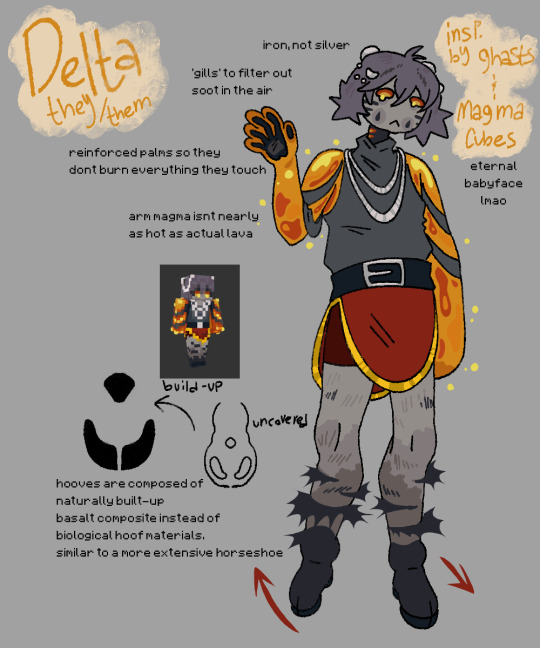
Made a Minecraft-centric blog just to spread Basalt Delta propaganda
#minecraft#basalt delta#minecraft oc#minecraft art#minecraft skin#basalt delta propaganda#delter art#THEY R JUST LIKE ME FR
16 notes
·
View notes
Text
Christmas present for my friend! Our Minecraft skins (OC and Komaru) in Basalt Hell.
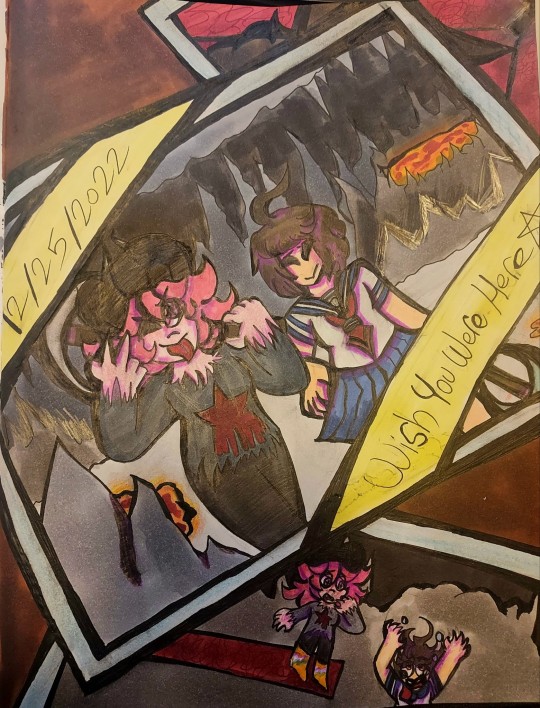
#my art#art#traditional art#komaru naegi#Ari Aellea#my ocs#Minecraft#basalt delta#Basalt Hell#(as the basalt delta is better known)
1 note
·
View note
Photo
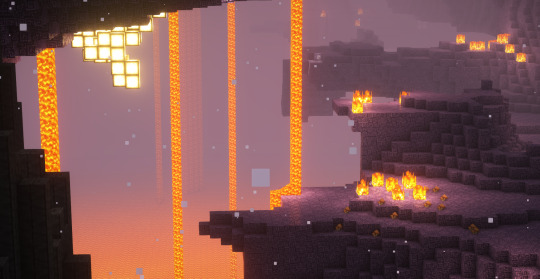

#minecraft#screenshots#mizuno's 16 craft#complementary reimagined#nether#nether wastes#basalt deltas
232 notes
·
View notes
Text
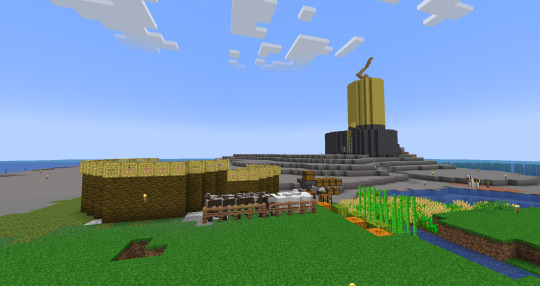
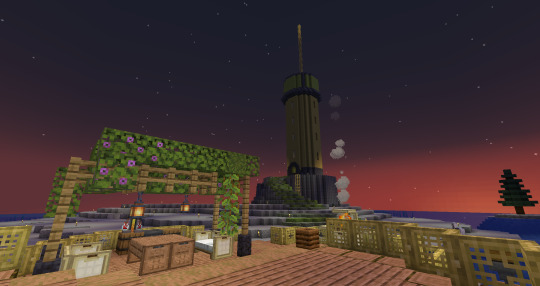
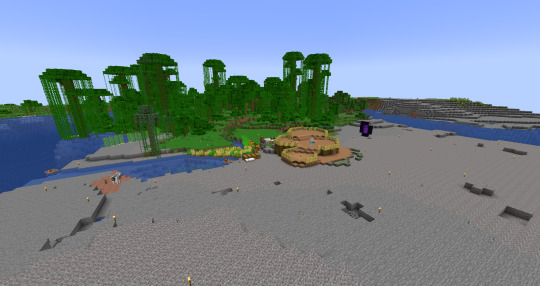
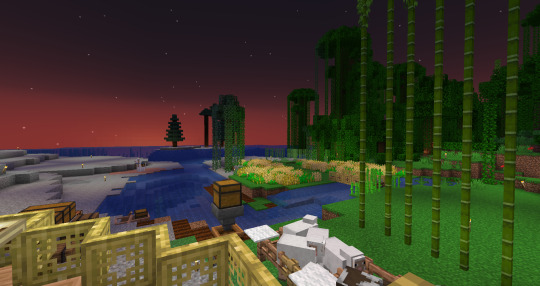
a few day's progress at spawn in my singleplayer, large biome world. the lighthouse (incomplete) is now mostly a mob farm using the scaffold water dispensers from ianxofour's design, but super compacted and a different shape because i don't even want high-volume output, just something i can let run passively or AFK at if i'm pausing to go do a chore or whatever.
the green part has an enchanting room & i think i might try to make fake light beams to hide the scaff tower for AFKing if i can stomach another 7000 block boat trip.
once I get the lighthouse a little better off I wanna focus on the farming/animal area, which will be behind the bamboo across from the wheat farms. there's a big ole plain just north of here that i might convert wholly to farmland, so it'll just be practical small scale for now to give a pretty view.
#peter plays#minecraft#does that tower happen to look like my ethog*rls base? yes bc this spawn is a huge basalt delta.#and w hat ELSE am i gonna do with thirty stacks of basalt.#speaking of chores it's back to tidying before i LEAVE TOMORROW. augh
10 notes
·
View notes
Text
The Nether Environment - Ecosystem, Biomes, and Wildlife (part one)
Note - this will contain some headcanon organisms/features that aren’t ingame
The nether’s ecosystem is entirely reliant on the abundant fungi that thrive in its dark and humid environment. Contrary to popular belief, water does exist in the nether, but not in ways we are familiar with. Unlike it’s sister dimension, the Overworld, water can only exist in a vaporous form within the Nether. In the crust of the Nether, it is cooler, and small pockets of water create hydrothermal geysers that spurt out steam periodically. Many life forms have evolved to take advantage of this abdunant expulsion of moisture and minerals, as the water is infused with the layers and layers of dead biological matter and inorganic salts and vitamins within the netherrack. These vents often occur in Nether Wastes. While the Nether is hostile, it is not a desolate place.
Crimson Forests
Crimson forests are some of the most biodiverse areas of the Nether. Within the crimson forest prowls a frightening apex predator - the Hoglin. However, the Hoglin is not entirely native to the nether. It is a mammal, a group of animalia native to the Overworld. The origins of this bulky opportunistic hunter are murky, but it is hypothesised by Netherologists that they originated by wild pigs straying into man-made and rare naturally occurring portals and becoming trapped. The crimson fungi are the true kings of this realm, however, and provide the food and shelter for the life forms of the forests.
Crimson fungi have intricate networks of root like growths that feed off of the scarce moisture in the ground, as well as extra nutrients such as decomposing matter and experience - the energy and information within a being that is expelled once the soul leaves the body. Similar to the Sculk of the Overworld, Netherian fungi are dependent on death for their food intake. Unlike the Sculk super-organism, however, Netherian fungi do not have a way of actively taking down live prey.
Hoglins feed upon the crimson mushrooms and other smaller fungi and netherian pseudo-plant (alien beings which are plant-like in nature) species. They will also paw into the netherrack dirt, searching for nutrient rich nylium ‘truffles’, small bulbous growths within the fungi that contain experience. The hoglins also prey upon other small animals and animal-like organisms. While much of the native nether megafauna have been hunted to extinction by ancient human influence, smaller native life forms remain scurrying through the undergrowth of these vast, treacherous forests. Little is documented upon these small life forms - often times no bigger than a rat - though explorers have been described them as looking like fleshy insectoids, like the rest of the native Netherian organisms. It is possible these creatures may be smaller relatives of the larger, stockier Strider. These creatures are grouped together as ‘mushroom mites’ in an informal classification.
Hoglins are highly opportunistic and successful, but are not the top pig on the block. Their relatives, the smaller, leaner and intelligent Piglin prey on these animals, and are dependent on their meat and blood for sustenance, their hide for clothing and their ivory tusks for weapons and tools. Piglin are very interesting creatures, because they are potentially the only sapient being that is confirmed not to be a hominid (there is much debate in Enderologist communities on whether Endermen are hominid in origin, due to the lack of a fossil record in the End, and Testificates - villagers and illagers - are close relatives of Homo Sapiens and are also great apes).
Despite their volatile environment, the Piglin have a rich culture. Their diets consist of fungi, Strider, Hoglin, and very occasionally, Ghast. However, Ghast meat is said to have a foul bitter taste, and it’s low nutrient content is not worth the danger of hunting them. Piglin are artistic and spiritual beings, like hominids, and they hold a sense of honor and respect dearly to them. Due to their different anatomy, their language is unable to be fluently spoken by humans and testificates, and thus, causes divide between the two groups. The Overworld is talked in almost a mythical context from piglin to piglin - similar to how the Nether is regarded in villager culture.
Piglin are dependent on Hoglins. They serve as handy steeds and beasts of labour in a treacherous, unsteady landscape, and their meat is rich and fatty - a good source of fat is hard to come by in The Nether. Hoglin meat is described by Nether-goers to be greasy and tender, even when raw, yet with a complex and gamey flavour.
Interestingly, Piglin are unable to digest plants - due to there being a lack of plant life in the nether, those niches being filled by fungi and alien organisms.
Soul Sand Valleys
Soul sand valleys are desolate places. You will find very little life here. Small invertebrates may burrow into the soil, but otherwise, the foreboding presence of mass death and soul expulsion instinctually drives many creatures away. Despite this, valleys are rich with nutrients and energy. Unfortunately this abundance of soul energy and minerals will not help any land creature, as due to the amount of souls in such a concentrated area, it releases a very low frequency that will send any creature into a panicked, nervous state over a long period of time.
Netherologists describe this feeling as ‘soul sickness’. Afflicted persons may experience hallucinations and paranoia, and will be compelled to escape to an area that does not contain soul sand.
Soul sickness does not seem to hinder the gigantic aerial predators of The Nether, however - the Ghast. These huge octopodic organisms can reach up to 24 meters in length. They congregate to these valleys to take advantage of the coarse soul - bathing in the sand and removing dead tissue from their body. The soul energy creates static electricity, and this helps drive out any parasites. However, even these behemoths don’t stay long. Once they have bathed, they quickly flee, the soul sickness frequency affecting them as well. If an organism is able to die, the soul frequency appears to be able to affect them. Ghasts can get agitated if they are unable to leave for whatever reason, and this often causes territorial disputes between two specimens in an otherwise unusual proximity to one another.
Undead humanoids, devoid of flesh, are often seen wandering the soul valleys. Netherologists are unsure of their origin, and from studying their bones, they seem to be hundreds of years old. Their white bones are stained with an earthy brown from the sand. These mysterious corpses baffle researchers to this day, and are considered literal ‘living’ fossils.
While piglin are frightened of the valleys themselves, soulsand is often gathered in short intervals (in order to not fall ill) for medicinal purposes. Ground down with melted Hoglin fat, it is turned into a fine paste, and eaten in spiritual practices and as medicine.
The Wither is fueled by the abundance of energy within the sand it is constructed from, and a Nether Star is the hyper-condensed, crystallized version of the souls.
#minecraft#mineblr#minecraft headcanons#minecraft lore#nether#the nether#will make part 2 with warped forests and basalt deltas soon
84 notes
·
View notes
Text
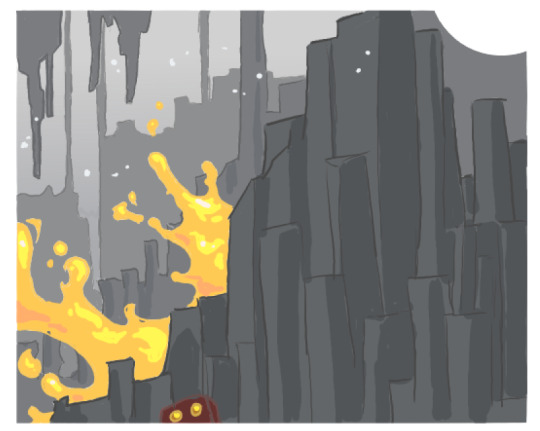
stepping up the background game. guess who goes there.
6 notes
·
View notes
Text
New Minecraft world Generates "worst Nether ever" asked to leave Blunt rotation
#literally stepped out of the Portal right into a puddle of lava#and it spawns into a godsdamned basalt delta#the literal worst fucking biome ever#i hate magmacubes and you should too#idk man
6 notes
·
View notes
Text
Has anyone else noticed that the crackling in the Basalt Deltas ambient track kinda sounds like a geiger counter?
5 notes
·
View notes
Text
If Basalt Deltas have a million fans, then I'm one of them.
If Basalt Deltas have one fan, then I'm THAT ONE.
If Basalt Deltas have no fans, that means I'm dead.
#spain speaks#minecraft#I Like Them#i kniw everyone hates them cause theyre annoyin ta traverse but its bout the VIBES!!#standin in a multi level basalt delta w/ the music playin is like genuinely onea my fav mc experiences#awe inspiring shit man...
1 note
·
View note
Text
To whoever came up with ghasts, a question:
WHY?
#I wanted to play a silly little challenge#and ended up playing hide and seek with Them#at least they despawn quickly¿¿¿#on a similar note#to whoever came up with basalt deltas: thank you SO MUCH#Minecraft#mineblr#minecraft nether#minecraft ghast
0 notes
Photo

163 notes
·
View notes
Text
it took me fully 30 minutes to cross a 9800 block ocean (lag time included bc of Cat Interruptions, slow chunk loading) and I realized. I forgot. A backup pick. because if my distances are >1000 blocks in the nether one chest boat of blue ice is NOT going to cut it. And i barely have 9 stacks. This was the most convenient way to get both things but wow
#i at least brought obsidian for a portal but i dont want to enter it from this side bc i am so scared#of the spawn area basalt delta. i gotta tunnel in the ceiling#peter plays
8 notes
·
View notes